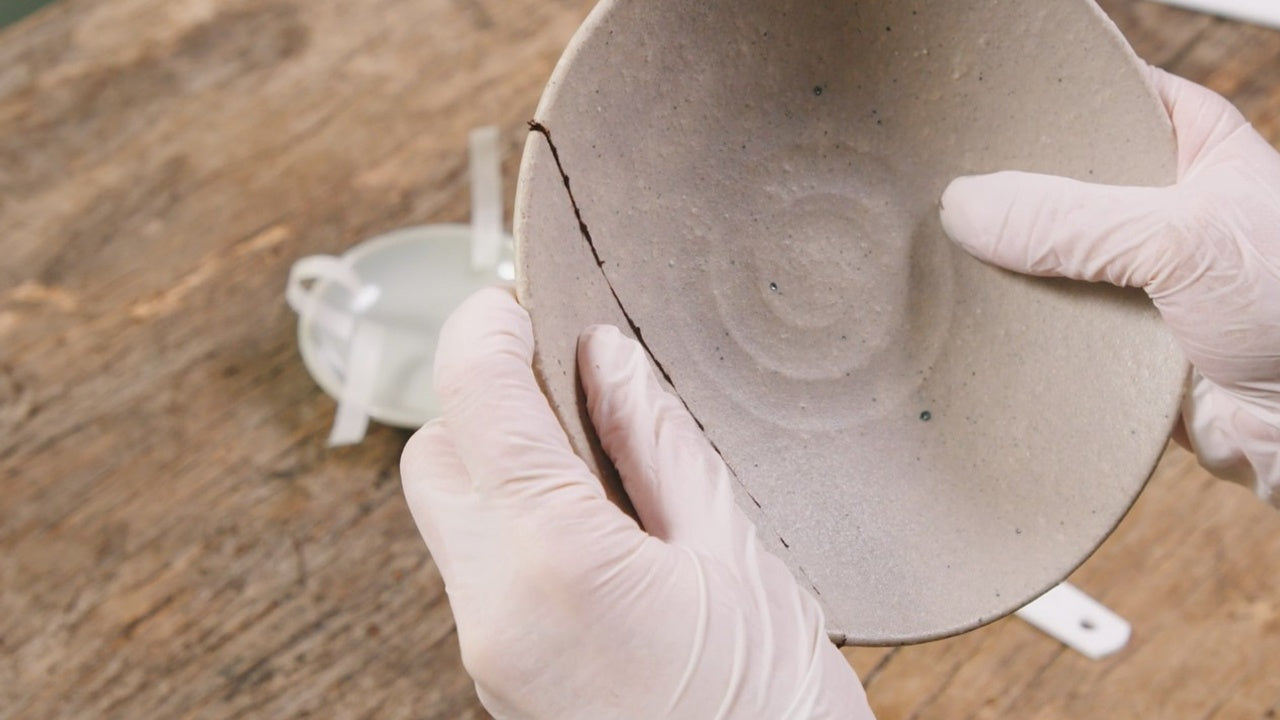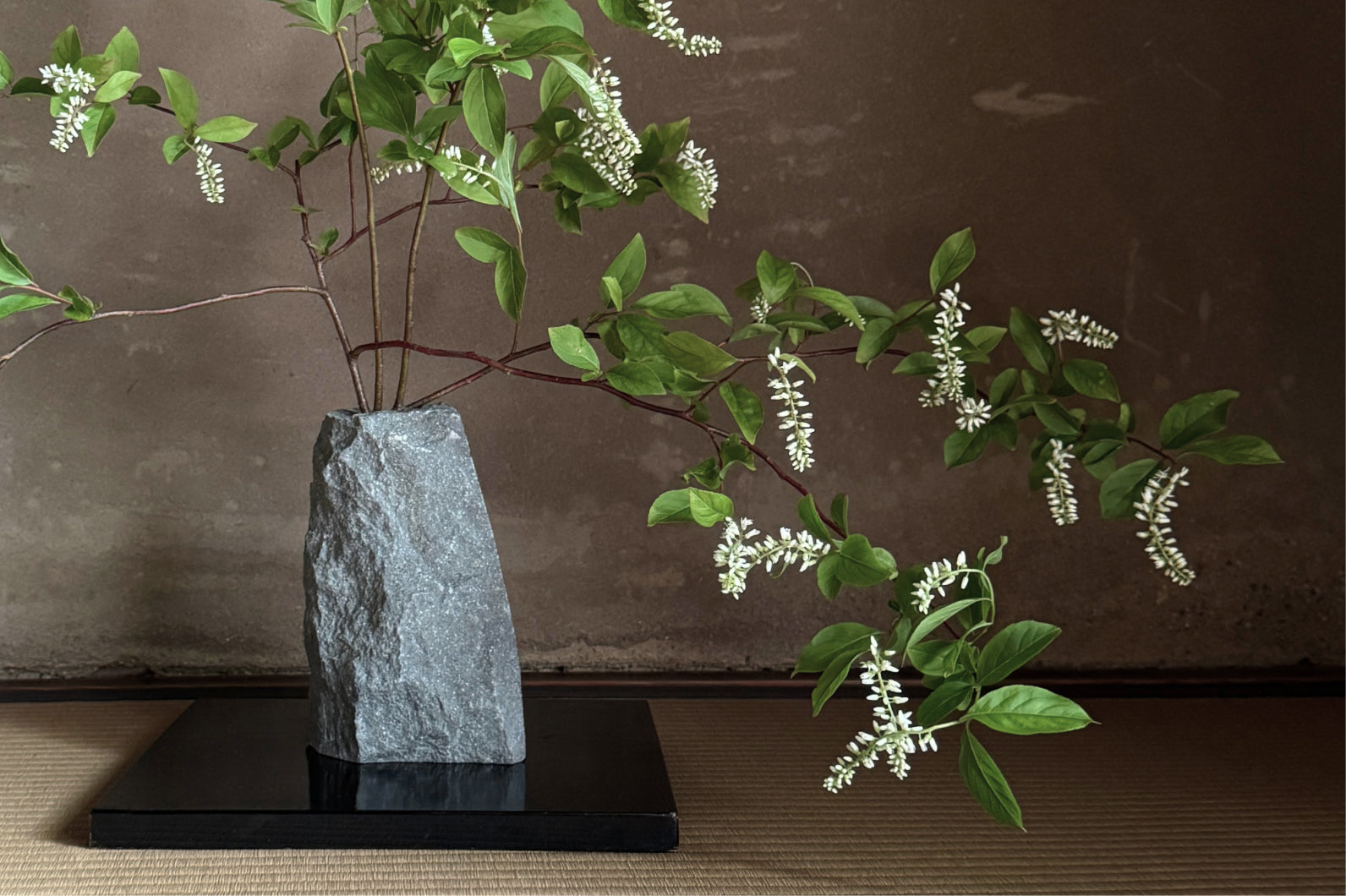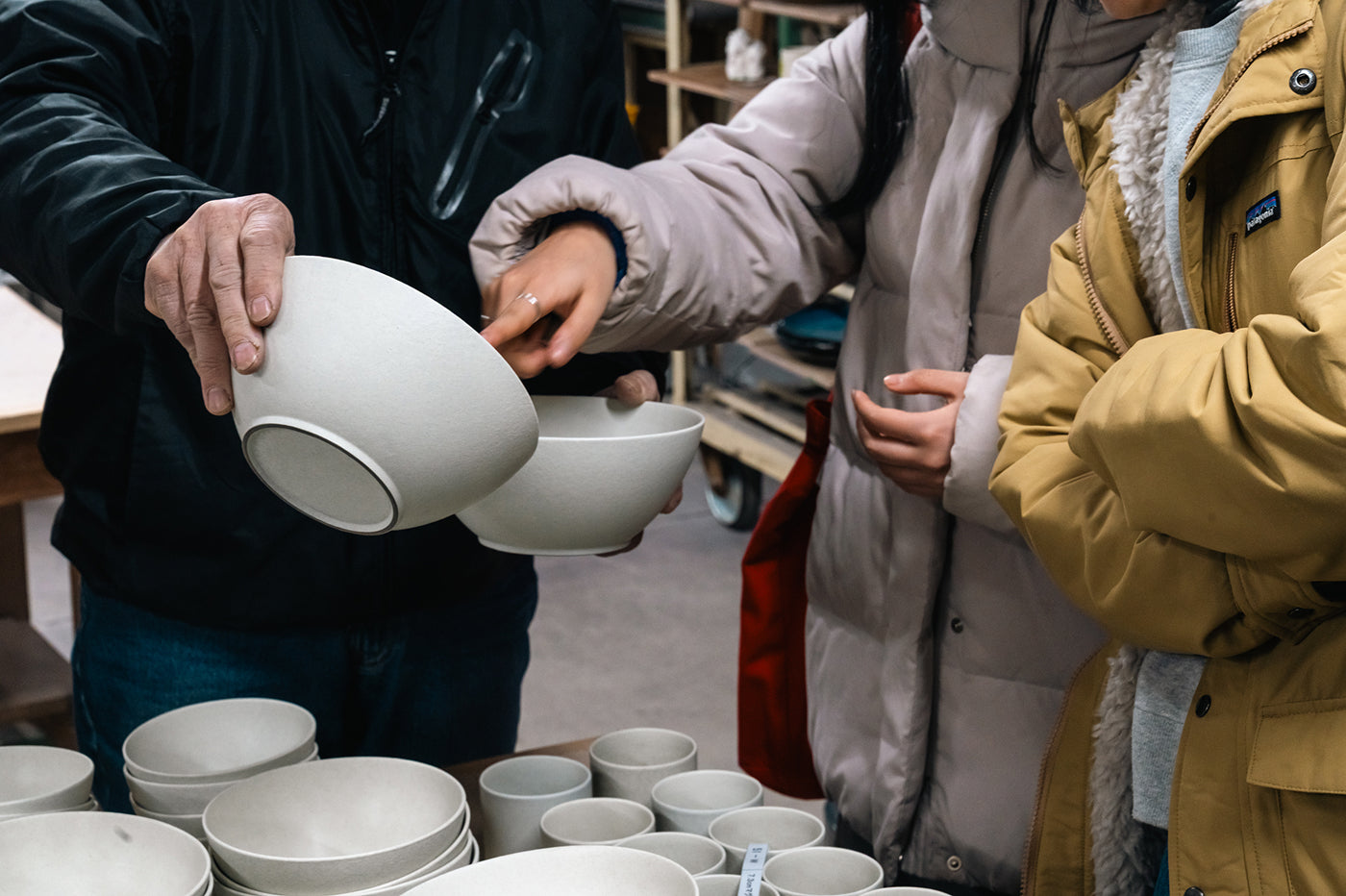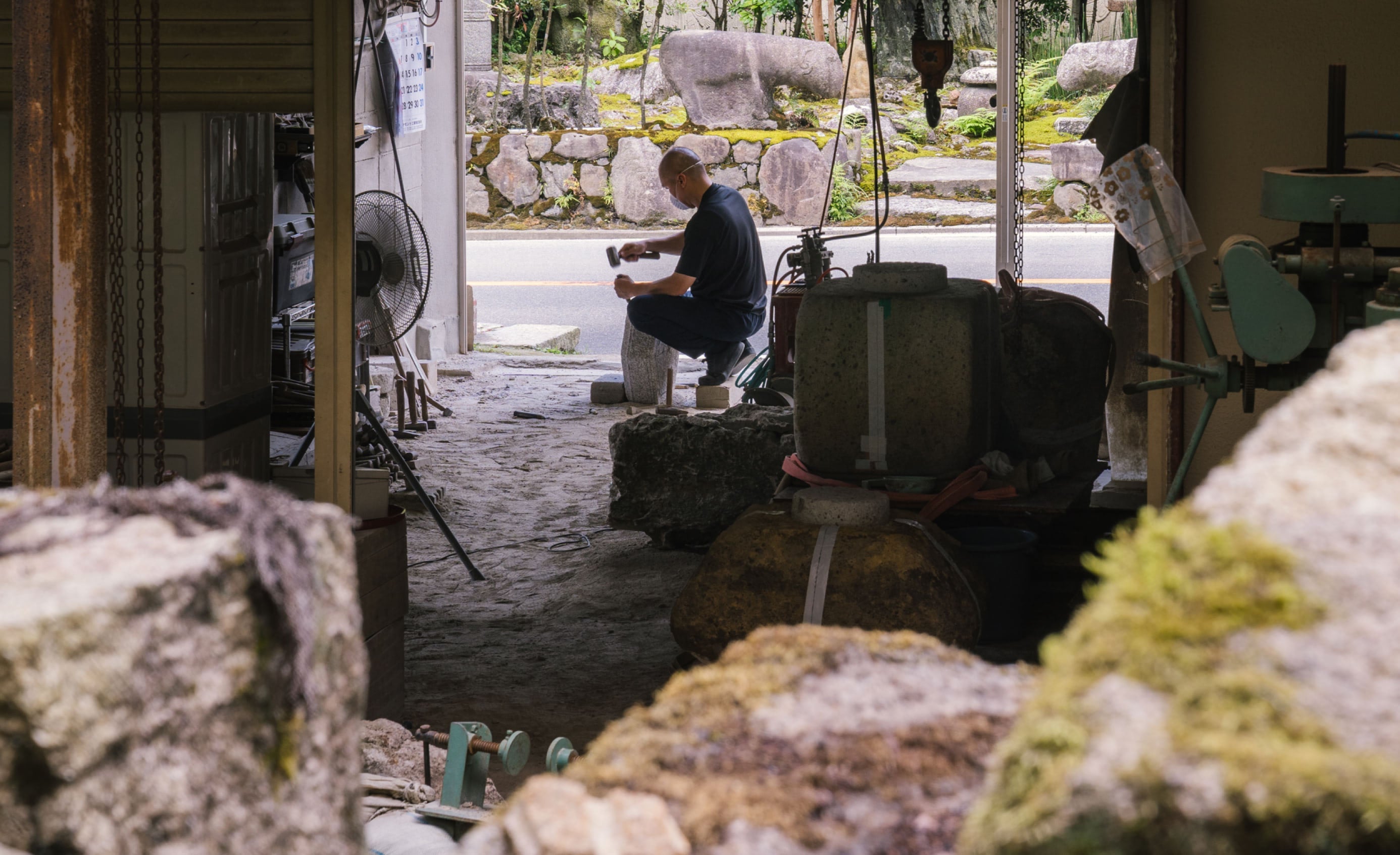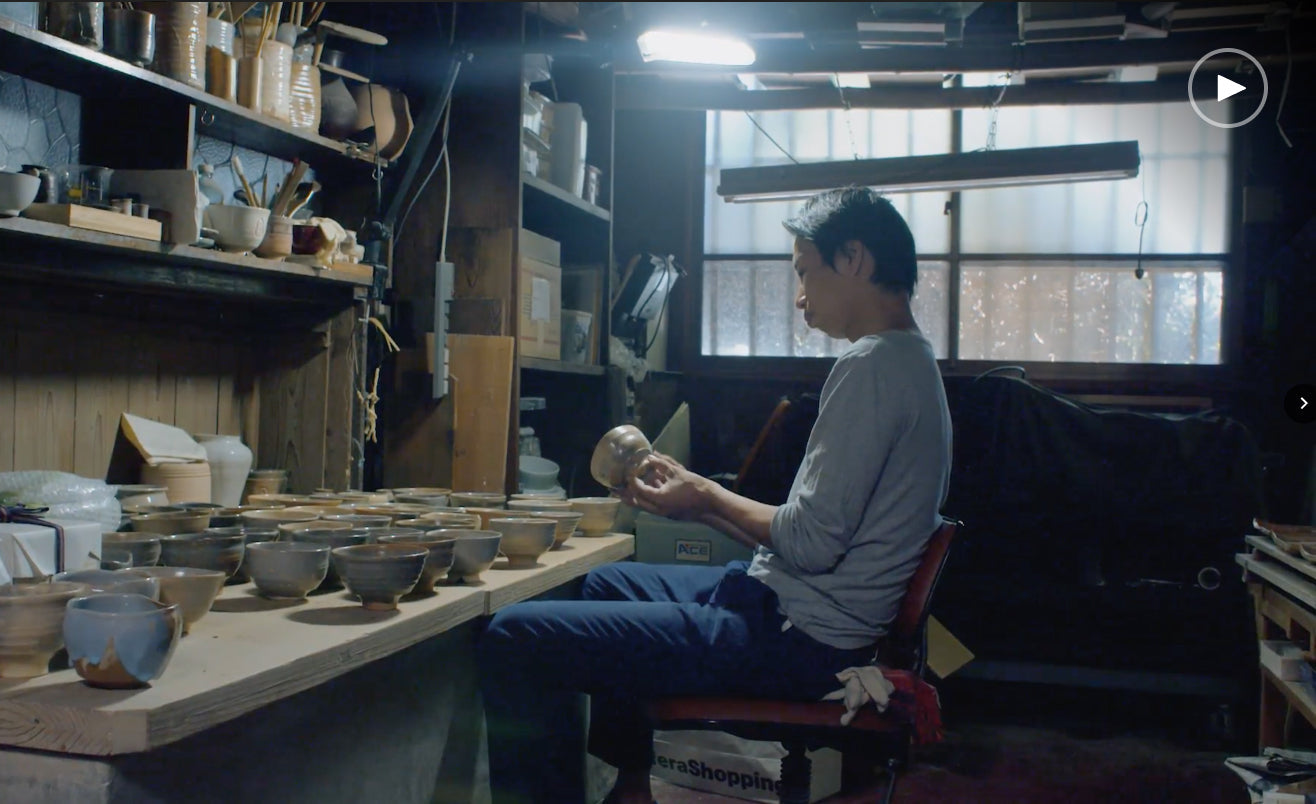- Not a food-safe repair
- Fragile repair and may break again easily
- Easy access
- Quick drying time
- Low skin irritation
- Hardens slowly and under specific conditions
- Urushi may cause skin irritation in its raw and wet state
- All-natural ingredients
- 100% food-safe repair
- Durability
MUGI URUSHI RECIPE
- Flour (white wheat flour)
- Water
- Kiurushi (raw urushi)
- Small spatula
- Glass palette or ceramic tile
- Dropper
- With the spatula, scoop up a small amount of flour and place on a palette. How much? Enough so that a thin layer of mugi urushi can be laid onto both surfaces of the broken piece. If you do not have a palette, simply use a glazed ceramic, porcelain, or glass plate instead.
- Use a dropper to add water to the flour, one droplet at a time, and use the spatula to knead as you go. Essentially, you are making dough. Not as hard as pasta dough or as loose as pancake batter, but somewhere between cookie batter and bread dough.


-
Once you think you've gotten to a good consistency, right next to the dough squeeze out an equal amount* of kiurushi as the flour. Begin by kneading in half of the kiurushi. Once it's combined, add in the second half. You are looking to create a consistency similar to that of chewing gum. When you pull the spatula from the palette, the mixture should stretch quite a bit.



-
Take the spatula or bamboo palette knife and lay a very thin, even layer of mugi urushi to both surfaces of the broken piece.

- Prepare several pieces of masking tape.
-
Push the broken pieces together, sliding and nudging them a bit until you feel like they have clicked into place.

-
Begin pulling the pieces closer together by leveraging the slightly elastic nature of the masking tape. Tape both the top (inside) and bottom (outside) of the broken ware. The pieces should be very tightly bound.

- This is the perfect time to double check whether the two pieces are level with one another. Take a pen, knife, or other firm tool and rock it back and forth between the two pieces at several points of the bind. At least at the lips of the ware and in the center of the breakage. If you feel a little bump or step, then carefully peel the masking tape that's holding that specific area together and jiggle the pieces until they are level before securing with masking tape again.
- Place the ware in the muro in a way that leverages gravity instead of working against it. For example, if it's a bowl that's broken in half, rather than placing the bowl flat into the muro, like you would when placing in the cabinet or on the dining table, place it on its side so that gravity can help the pieces bind together. If it moves about, the bowl can be secured in place by using masking tape between the bowl and the walls of the muro.


